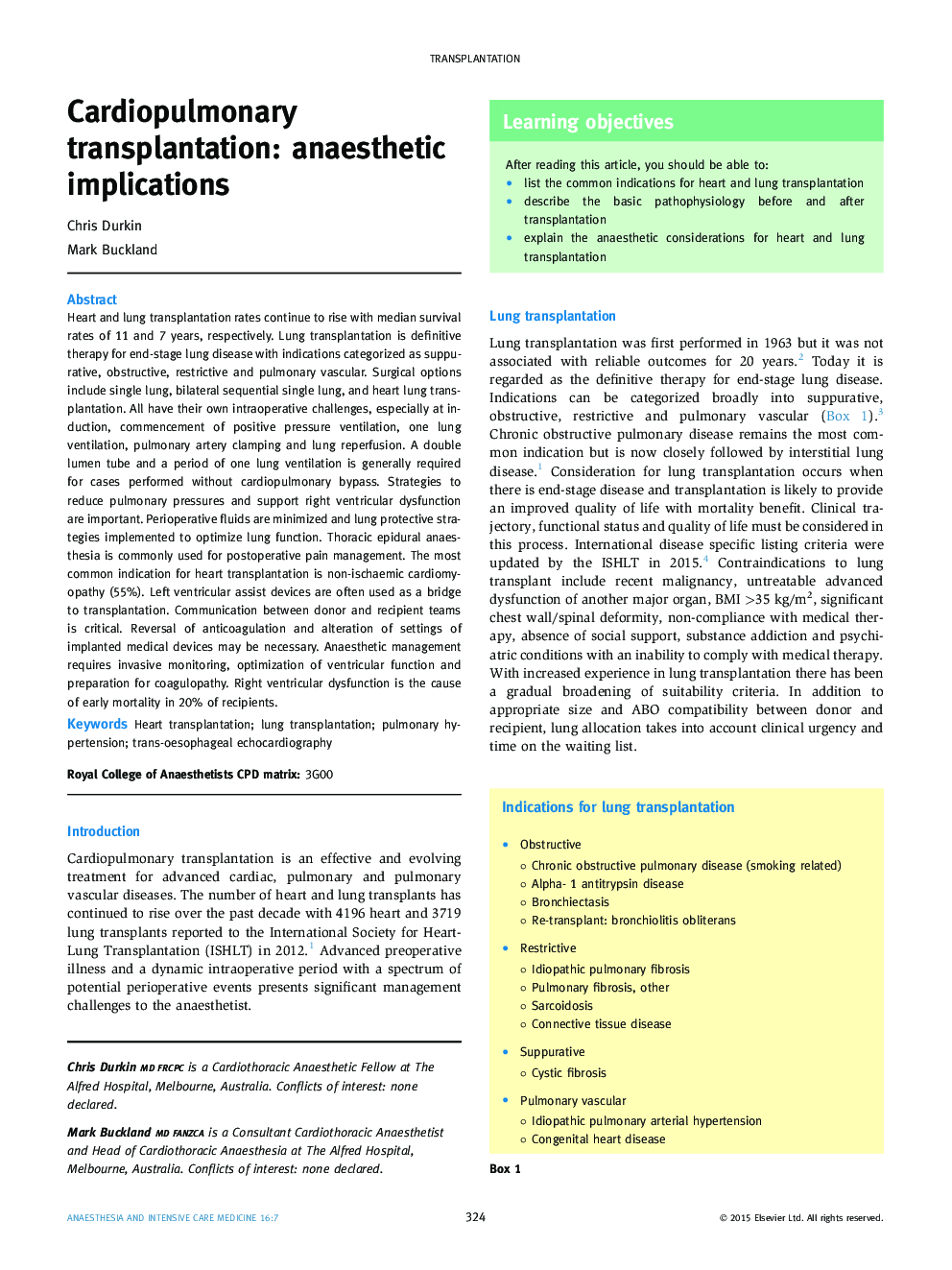| Article ID | Journal | Published Year | Pages | File Type |
|---|---|---|---|---|
| 2742188 | Anaesthesia & Intensive Care Medicine | 2015 | 4 Pages |
Heart and lung transplantation rates continue to rise with median survival rates of 11 and 7 years, respectively. Lung transplantation is definitive therapy for end-stage lung disease with indications categorized as suppurative, obstructive, restrictive and pulmonary vascular. Surgical options include single lung, bilateral sequential single lung, and heart lung transplantation. All have their own intraoperative challenges, especially at induction, commencement of positive pressure ventilation, one lung ventilation, pulmonary artery clamping and lung reperfusion. A double lumen tube and a period of one lung ventilation is generally required for cases performed without cardiopulmonary bypass. Strategies to reduce pulmonary pressures and support right ventricular dysfunction are important. Perioperative fluids are minimized and lung protective strategies implemented to optimize lung function. Thoracic epidural anaesthesia is commonly used for postoperative pain management. The most common indication for heart transplantation is non-ischaemic cardiomyopathy (55%). Left ventricular assist devices are often used as a bridge to transplantation. Communication between donor and recipient teams is critical. Reversal of anticoagulation and alteration of settings of implanted medical devices may be necessary. Anaesthetic management requires invasive monitoring, optimization of ventricular function and preparation for coagulopathy. Right ventricular dysfunction is the cause of early mortality in 20% of recipients.
